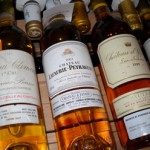 In today’s troubled times, investors aren’t sure where to put their money and, to add to the confusion, there are many more options for them to consider. In light of these issues, the recent Art, Wine or Stocks event discussed the risks and rewards of investing in these varied asset classes. Each discussion was ably addressed with a respective expert who further elucidated the nuances in investing and trading in these traditional and non-traditional commodities.
In today’s troubled times, investors aren’t sure where to put their money and, to add to the confusion, there are many more options for them to consider. In light of these issues, the recent Art, Wine or Stocks event discussed the risks and rewards of investing in these varied asset classes. Each discussion was ably addressed with a respective expert who further elucidated the nuances in investing and trading in these traditional and non-traditional commodities.
For stocks, Kathy Boyle, CFP™, President of Chapin Hill Advisors, shared her firm’s strategy for protecting clients during long term secular bear markets which CHA feels we are in the midst of a cycle and may have another 6-10 years to go. Backed up by historical graphs, Kathy explained that the bear cycle from 2000-2002 followed an 18 year secular bull market where investors and advisors were trained to buy and hold. Using the market model from the period prior to this boom, along with her own sharp instincts, Kathy and her team carefully plot an investment course for clients, which seek to minimize loss amidst the tumultuous market. Kathy feels that protecting client’s wealth is the key in today’s stock market as compared to earning significant gains, which was more easily accomplished under the old set of parameters. For her, it is all about holding portfolio value steady at this point in time.
Admittedly, art is an expensive investment, but Jennifer Krieger, Founder of Hawthorne Fine Art, believes that it can be a good one if investors choose wisely. She recommends finding a mentor to help one identify and find the pieces of art they wish to purchase and further suggested that non-contemporary American art has an excellent track record of maintaining good quality and value over time. This is especially true when compared with more modern pieces that have peaks and valleys in their marketability. Jennifer also notes that art purchases should be made with an eye on the long term as their investment value will take time to grow. At her gallery, Jennifer’s current exhibit features Clark Greenberg Voorhees, an American impressionist painter she has admired from her early days venturing into art. Today’s exhibit is a culmination of her years of work and effort in tracking down dozens of Mr. Voorhees’ works, most of which were in the homes of private collectors, rather than on display in museums. Many of Voorhees pieces cost upwards of $20,000, but a few smaller canvases are priced below that figure.
As John Kapon, President and Auction Director of Acker, Merrall & Condit, unwittingly noted, wine is a liquid asset. However, compared to stocks, it, like art, is illiquid. Despite its illiquidity, John noted that wine has the advantage in that it can always be drunk and enjoyed even if the investment doesn’t pan out. Throughout his conversation, John discussed the need to make big investments in wine in order to make money doing so. Additionally, he pointed out that the other aspect to successful wine investment is time – with time bottles become more scarce, and, with scarcity, they become rarer and thus more valuable to the collectors who are anxious to obtain those wines. John advised that China, especially Hong Kong, was very alive in the market and that most, if not all, of the wine market’s decline had been recouped. While he didn’t offer a detailed list of investment quality wines, John suggested that French wines continue to deliver as the big winners, with only a handful of wines from elsewhere doing well in the auction market. An audience member asked about the Futures market in wine to which John strongly advised the need to buy from a reputable firm, alluding to some of the recent scandals surrounding the Futures trade. Of course, dishonesty in wine isn’t limited to the Futures market. Thus, it is important to do one’s homework in all areas of investing, whether one chooses to invest in art, wine or stocks.
